Understanding Sustainable Drainage Systems (SuDS)
Using natural solutions to mitigate surface water runoff in urban areas
The issue of rainwater and flood management is prevalent in most urban areas around the world. As societies build roads, buildings, pavements, and other spaces with hard impermeable materials such as concrete, tarmac, and stone, thought must be given to the drainage of rainwater. If left unchecked, the buildup of excess rainfall can cause severe flooding, damaging infrastructure, polluting the water and causing widespread disruption.
While most urban planning has accommodated the drainage of precipitation via underground drains and sewers, a lot of the infrastructure developed for rainwater runoff was not built to facilitate the extensive development of urban areas, and the increase of unpredictable, more extreme weather patterns. Climate change has exacerbated this issue, as areas such as the UK have received record levels of precipitation, as well as increased storm and flooding warnings across the country.
Upgrading and improving drainage systems to handle the increased burden can be a costly and logistically disruptive endeavour, however there are other solutions to the problem that can help to mitigate the flow of rainfall, and to help control and reduce the damage caused by urban flooding. Sustainable drainage systems, or SuDS for short, are rainwater management practices that not only help to manage storm runoff, but also provide green spaces to urban areas, helping to increasing biodiversity, and provide tranquil spaces for the local residents to enjoy.

What are SuDS and why do we need them?
Sustainable drainage systems (SuDS) are a new approach to managing surface water runoff in urban areas. The main idea is to mimic the way in which nature absorbs and moderates rainfall runoff, providing a mixture of both natural, and engineered solutions. Natural areas are actually very efficient in managing the flow of rainfall, being able to absorb and store moisture for long periods of time, before slowly releasing the excess water, which is largely down to permeable surfaces such as soil, as well as the absorbent nature of roots, and the slower speed at which rainfall moves through grassy areas in comparison to hard concrete or tarmac.
SuDS are becoming increasingly important solutions in urban areas for a number of reasons. There are four primary direct benefits to SuDS on their local infrastructure, environment and population.
1. Water flow moderation
With the climate crisis drastically shifting weather patterns, and creating higher sea levels and increased rainfall, the current infrastructure in urban areas is struggling to cope. Research published on nature.com suggests that by 2080, extreme rainfall events in the UK could be at levels four times higher than that of the 1980s. These extreme heavy rainfall periods were simply not anticipated when most infrastructure was built, and as a result, there’s been a sharp rise in flash flooding in areas where hourly rainfall is exceeding the drainage capacity. SuDS reduce the risk of flash floods in urban areas by slowing down the water flow. This allows drains to better deal with the flow of water, preventing them from becoming overwhelmed, and overflowing.
2. Water pollution treatment
Urban rainfall is often filled with pollutants from industrialisation and traffic. Not only this, but the drainage of water through unsanitary urban areas can cause further pollution of the water. By allowing the water to filtrate and drain through soil and the roots of plants, pollutants are naturally removed, and absorbed, effectively ‘cleaning’ the water before it is transported into rivers and other ecosystems, benefitting not only the health of humans, but of the local plant and wildlife. Additionally, by preventing the flooding of sewers through water flow moderation, SuDS also play a part in the prevention of sewage spills into our environment.
3. Habitat creation and biodiversity growth
Sustainable Drainage Systems mostly employ soft landscaping and green infrastructure into their schemes, which provides habitats for wildlife to flourish, including shelter and nutrition. This helps to increase the biodiversity of an area, allowing not just animals, but plants to grow and flourish, even in urban spaces. It helps attract pollinators such as bees to help the further growth of green spaces, which in turn attracts even more wildlife. The UK is currently experiencing a biodiversity crisis, with native UK species having declined by almost 20% since 1970, and 1 in 6 species now threatened with extinction. The government recently introduced ‘Biodiversity Net Gain’ legislation to try and reverse the biodiversity loss, requiring all new developments to include plans to increase the biodiversity of the local area by at least 10%. Sustainable Drainage Systems are an effective way to help achieve this, whilst managing surface water runoff at the same time.
4. Amenity and recreational spaces
Most SuDS are multifunctional, and provide a number of uses at once. This means that the planting and implementation of green spaces for the purpose of rainfall management can also provide tranquil gardens and visual appeal to urban areas, allowing local residents to enjoy the plants and the wildlife it attracts. Rainfall gardens that are designed to moderate waterflow can also become an amenity for locals to use. Trees to provide a canopy that captures rainfall through its leaves and roots can also provide shade and shelter for passersby on hot summer days. Regardless of their water absorbing properties, planting greenery in urban areas has a large positive impact on the local society.
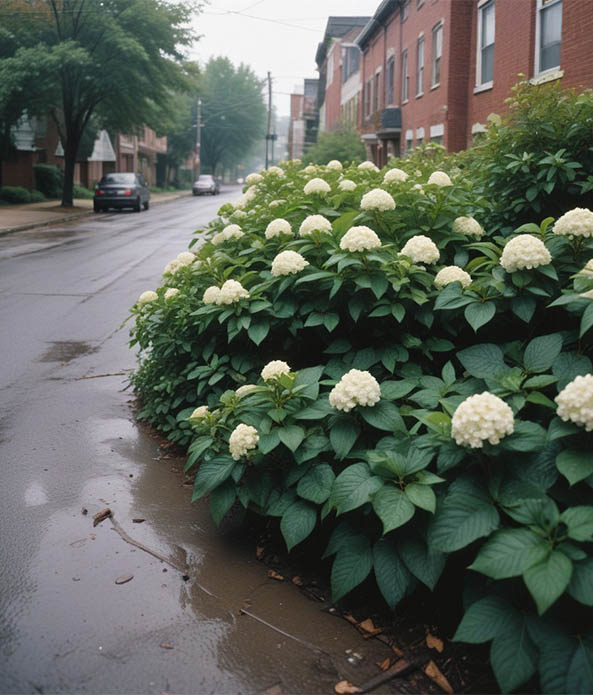
Different Types of SuDS
There are a number of different techniques and designs that fall into the category of SuDS, which may either be solely focussed on drainage, or have multiple purposes within the development.
Rain gardens
A Rain garden is a shallow area of a development to which other hard surfaces such as paths or roads can drain. These are generally situated on lower laying areas of a development, or ideally, the development is designed with runoff to a dedicated rain garden in mind. The soil fills with the rainwater, absorbing the excess and preventing surface flooding, remaining waterlogged for the next 48 hours, before eventually draining underground. The garden is then filled with plants that are flood tolerant, and can thrive in waterlogged soils, as well as trees with strong water absorption properties. They serve as effective SuDS, being able to absorb up to 30% more water than a lawn (Source: RHS). A Rain garden can successfully cope with the rainfall from an equivalent surface area 5 times the size of the garden, meaning that for a 100m² area of a roof or hard surface, the Rain garden need only be 20m².
Our suggestions:
Alnus Glutinosa (tree)
A large, deciduous, broadly conical tree with dark bark and light brown branches. Has rounded, dark green leaves with serrated edges. Can cope well with coastal locations and is resistant to waterlogging, making it perfect for rain gardens.
Viburnum opulus
Vigorous shrub with lobed maple-like leaves that provide autumn colour. Snowball-like clusters of white, or green tinted, flowers appear in late spring and are followed by translucent red berries. Its flowers and berries attract a variety of wildlife, making it a great encourager of biodiversity.
Prunus spinosa
An early-flowering native hedgerow species that has dark green leaves and spiny branches. It bears white blossom in early spring and produces blue-black sloe berries in autumn. Grows in just about any conditions, but able to thrive in moist but well-drained soils.

Alnus glutinosa

Viburnum opulus
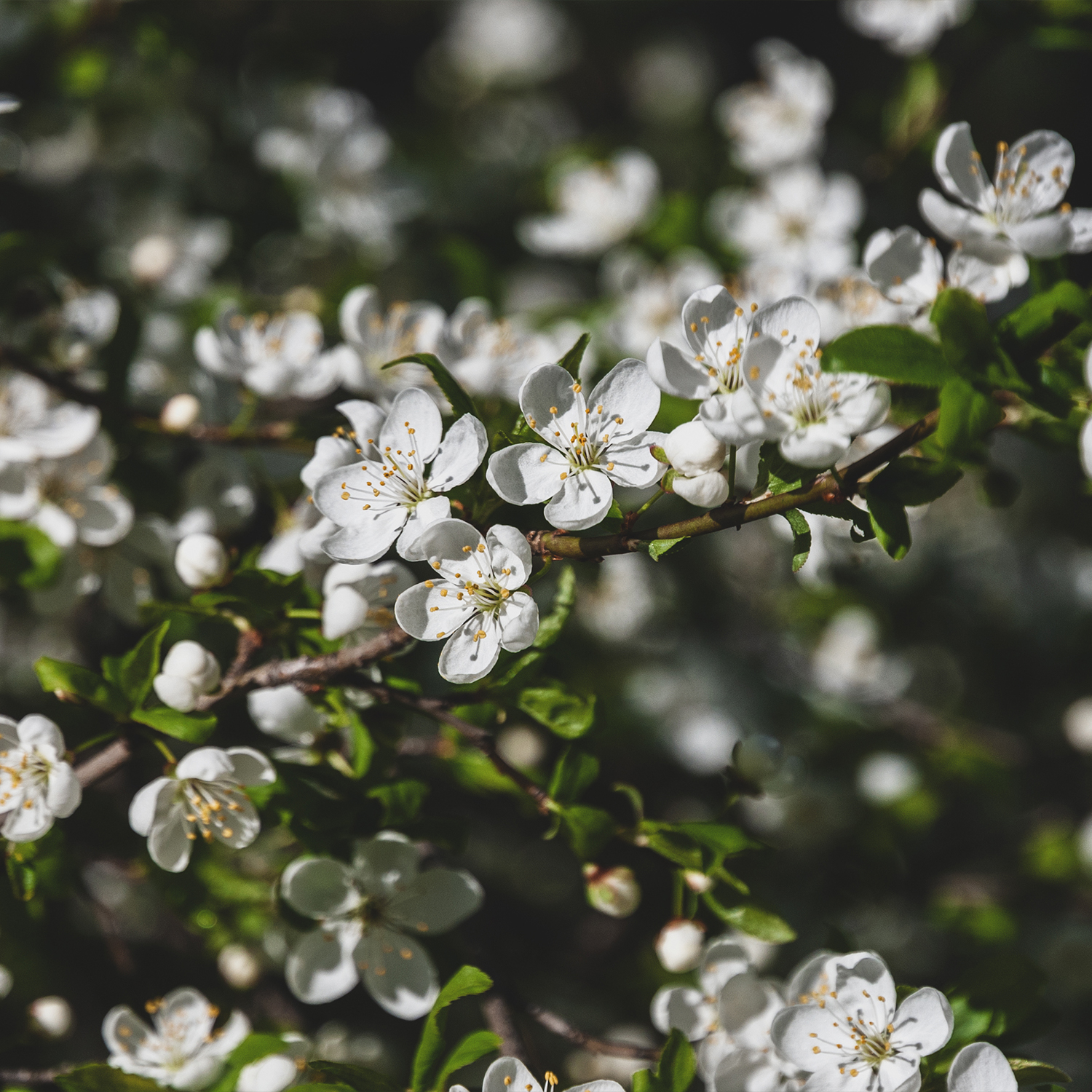
Prunus spinosa
SuDS planters
Planters are a more purpose-built SuDS solution, which help to mitigate rainfall drainage, mainly from rooves, and are not too demanding on space within a development. Much like a water butt, they work by connecting to a roof gutter via a pipe, allowing rainfall to flow directly into the planter, rather than straight into the drain. The planter stores the water, and releases the rainfall slowly, alleviating the strain on sewers and drains in periods of heavy rainfall. Unlike a water butt, the planter allows for plant life to grow, and provides an opportunity for more green spaces on a development, whilst also providing an effective drainage solution. The exact design varies from planter to planter, but the basic principle remains the same. Primarily the planter is filled with rich sandy soil, which allows for good air circulation and drainage. Below the level of soil, there is often an additional overflow area of water storage, which allows for excess water to drain from the soil through a membrane, and into an additional layer, where it is then slowly drained from the system through an outlet pipe at the bottom of the unit.

Suitable plants for this purpose must be able to endure flooded soils, but also periods of drought throughout the year. Due to the makeup of the soil, acidic tolerance is also useful.
Our suggestions:
Miscanthus sinesis
A deciduous, clump-forming grass that has slender, arching leaves with a central white stripe; these fade to straw in autumn. Sometimes blooms hanging, purple-flushed flower plumes in late summer which transition to silver during winter. Can tolerate wet, well-drained soils, just be careful of prolonged water-logging in winter.
Carex comans ‘Frosted Curls’
A drought tolerant, evergreen ornamental grass with a dens tussock of pale, silver-green leaves. Ideal for planting near ponds, as well as in flower beds and borders. Will tolerate moist soil, but avoid excessive winter wet.
Cornus Alba
A fast growing shrub with an arching habit once mature. Cream-white flowers bloom in spring, with berries following in summer and vibrant stems in winter. Generally will grow well in most conditions, making it a versatile and adaptable plant.

Miscanthus sinesis

Carex comans ‘Frosted Curls’ – Krzysztof Ziarnek, Kenraiz, CC BY-SA 4.0
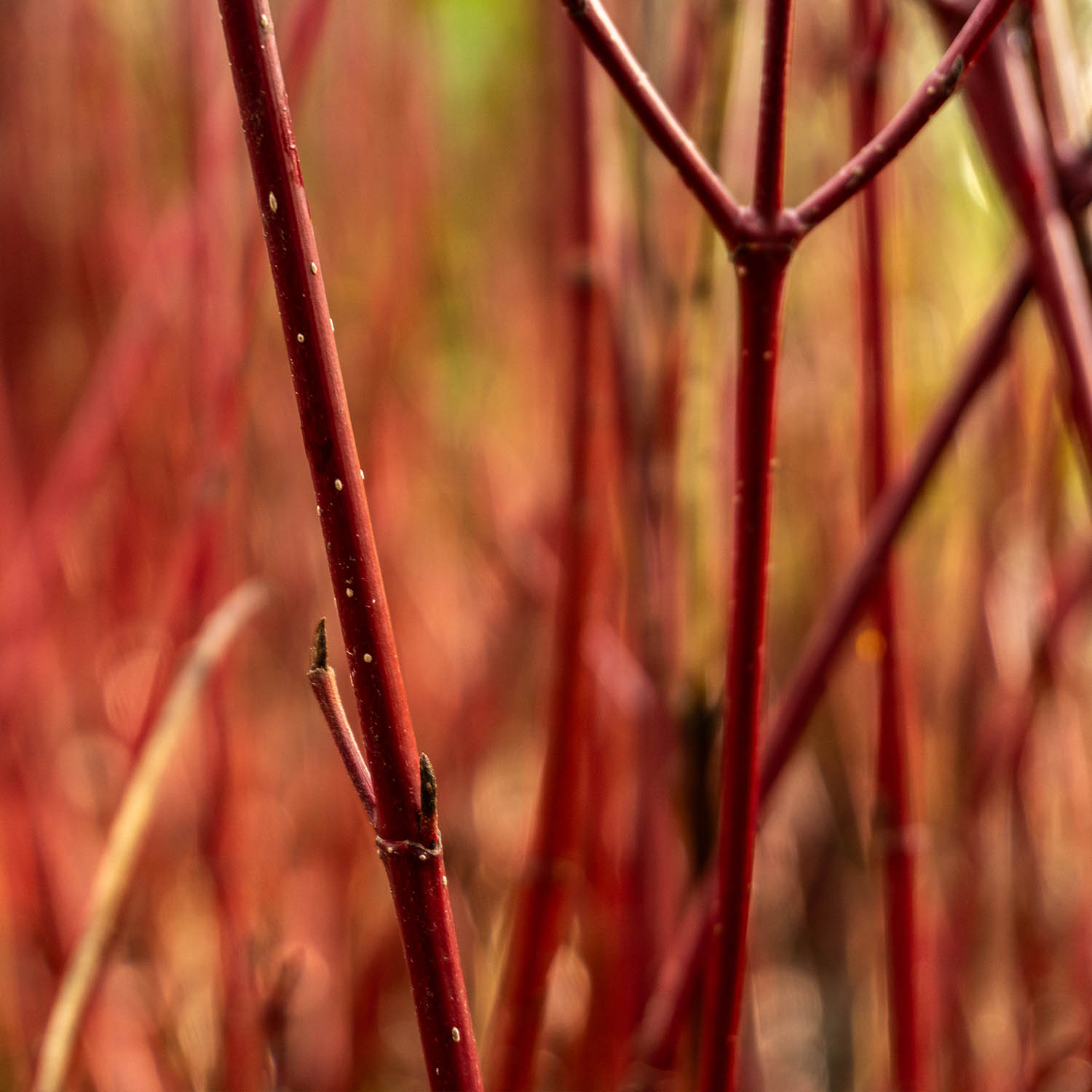
Cornus alba
Green roofs
One element of sustainable drainage that can be effective is known as source moderation. This means providing a form of mitigation for the rainfall where it lands, such as on a rooftop. Green roofs are essentially rooftops that are covered in plant life, usually in the form of grasses or moss. Rain drains slower through the grass and soil layer than it does when landing straight on the hard roof surface, and can help to control the speed at which the rainwater flows into the gutters, and subsequently into the drainage system. Whilst generally speaking, green roofs work best in tandem with other SuDS, they can be effective in slowing down the flow of rainfall from one of the largest hard surface areas in a typical development.
Filter Strips
Filter strips are gently sloping areas of land which are covered in planted vegetation, which are able to serve a few functions. Not only do they help to absorb and slow down the flow of water, but they also have a ‘filtration’ effect on the water, absorbing pollutants and essentially cleaning the water as it passes through. These are perfect for directing the flow of water down into a specific water channel at the bottom of a site, whilst reducing the speed at which the water enters that channel. They’re ideal for accepting runoff from a hard-surfaced area of the site, draining into a soft channel away from the development. Plants suitable for this type of system are able to thrive in fast draining soils, being tolerant to flooding, but also to periods of drought, particularly in the summer months. It’s recommended that the plants can tolerate full sun, as generally speaking these filter strips will be in open space, with no shelter from sunlight.

Our suggestions:
Lavandula angustifolia
A bushy, aromatic shrub with grey green leaves and long stalks bearing dense spikes of violet flowers in summer. Lavandula angustifolia is great for edging pathways. Grows well on slopes and can tolerate drought as well as moist soils.
Rosmarinus officinalis
This upright evergreen shrub has aromatic, narrow green leaves with white undersides that are widely used for culinary purposes. Pretty light blue to white flowers appear in late spring. Grows best in full sun, and prefers fast draining soils. Plant towards the top of the strip for best results.
Euonymus fortunei ‘Dart’s Blanket’
A small, mound-forming shrub with oval, dark green leaves on slender stems. In winter, the foliage transitions to a bronze-red shade. Very low maintenance, and can handle full sun, exposed or sheltered planting locations, as well as both dry and moist soils.
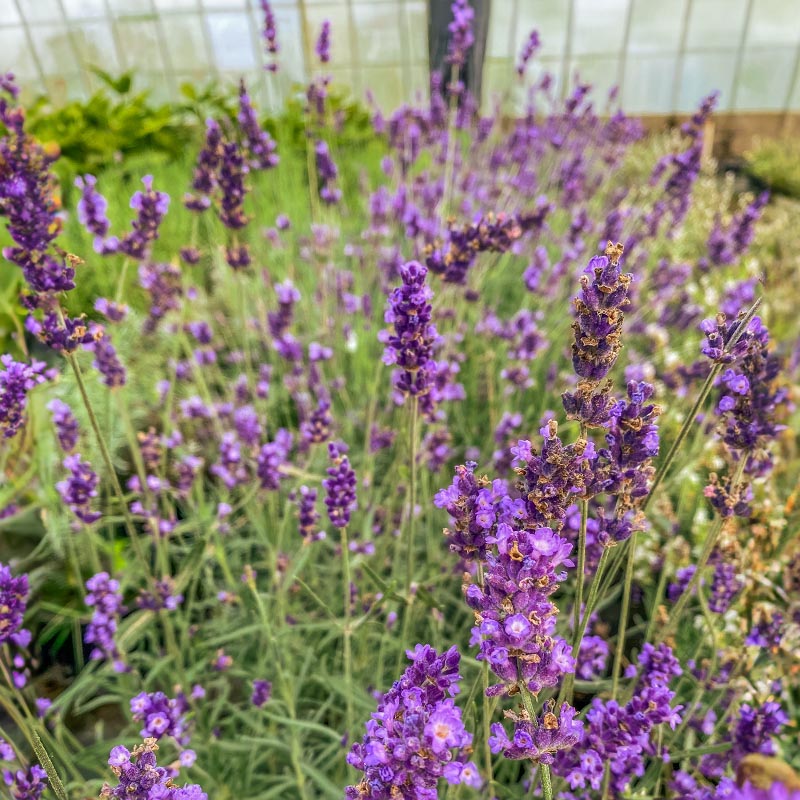
Lavandula angustifolia
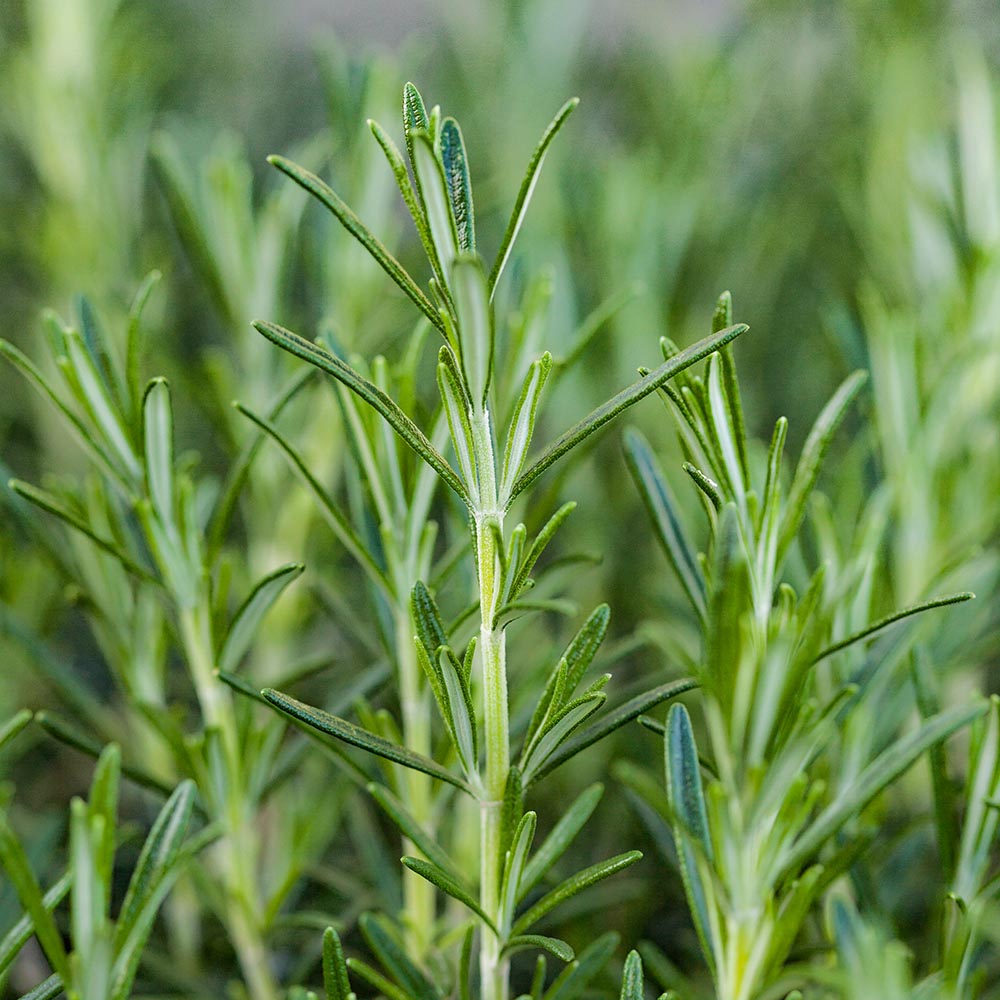
Rosmarinus officinalis

Euonymus fortunei ‘Dart’s Blanket’
Swales and Detention basins
Swales are channels that are dug into the ground, and provide a natural conveyance of water-flow, usually away from a development, and usually into the next stage of the process, which can either be a detention basin, or a drain. They’re effective ways of diverting waterflow, and are often very low-cost solutions. As well as helping to mitigate peak flow and overall water volume, swales are particularly effective at removing pollutants from the water, due to the absorption minerals and particles through the soil and vegetation. They’re an affordable, low maintenance SuDS solution, which are still able to provide some green space to a development. A detention or retention basin is often the final destination of a swale, but can also be placed anywhere within a development as a long term overflow, or final destination of surface water run-off. The difference between the two is that a retention basin is often a permanent pool of water, such as a pond, which maintains water all year round, and is contributed to by rainfall and waterflow from a development, whereas a detention basin is an area of land that is often dry with the exception of periods of heavy rainfall. Each has its own advantages, with retention basins being popular with wildlife, helping to create a natural habitat for wildlife, contributing to biodiversity, whereas a detention basin is multifunctional, and can provide an amenable space year-round for residents to use and enjoy, only filling with water when rainfall levels necessitate.
For more information on effective SuDS planting, speak to the G team today.

